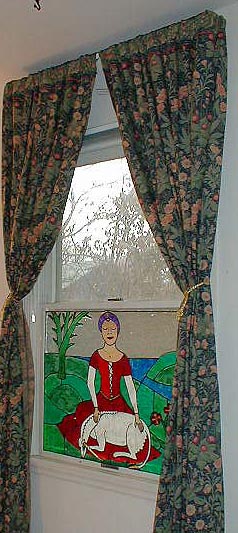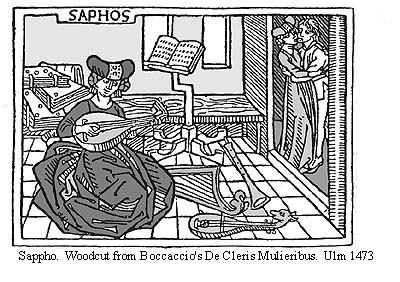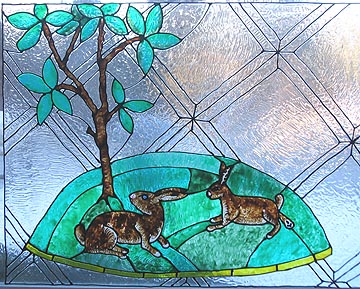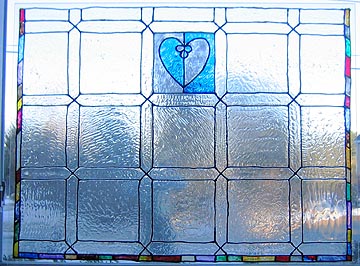 How to
make a fake medieval Stained Glass window
How to
make a fake medieval Stained Glass window How to
make a fake medieval Stained Glass window
How to
make a fake medieval Stained Glass window In
the woodcut example to the right, you could do the whole image, or just
use the
lady playing the lute, with a tile floor for some perspective and added
color.
In
the woodcut example to the right, you could do the whole image, or just
use the
lady playing the lute, with a tile floor for some perspective and added
color. 
 |
Things to notice: The
rabbits look fairly dark here, and there's an overall blue cast, but
that's
because I took the photo looking east at sunset. Notice the different segments in the hill, with three different greens. The gold border is an element taken from the red Cluny "mon seul desir" tapestries, which is where I got the rabbits. If this were a real glass window, the rabbits would be assembled in many sections. The mullioning (diamond window effect) is off plumb. I though a preprinted logo of the plastic company was on the square and used that instead of making my own marks! This was a companion piece to the lady and unicorn above -- you may notice that the lady's tree seems rather truncated. That's because I was going to make another panel for the top of that window with the tree in flower, but never got around to it. |
 |
Here's
one with a paned glass effect sourced from Black Adder -- the windows
in the Queen's audience chamber! These are simple to make, really. All the narrow clear strips of glass are exactly the width of my yardstick. Do that in a grid, centered side-to-side. Be sure that the spaces between are squares -- looks better. Then just draw an X at the intersections. You can see there are a variety of texture effects in the square segments. The lower right is quite smooth, others are striped, or furry, or curly. It's an artistic choice you can make if you want to border the top of your panel or not. You see my colored bits don't go across the top; it was a sash window and I decided it would look too "heavy" to have a border right in the middle (the top portion was just glass.) I think I might choose otherwise next time. |
